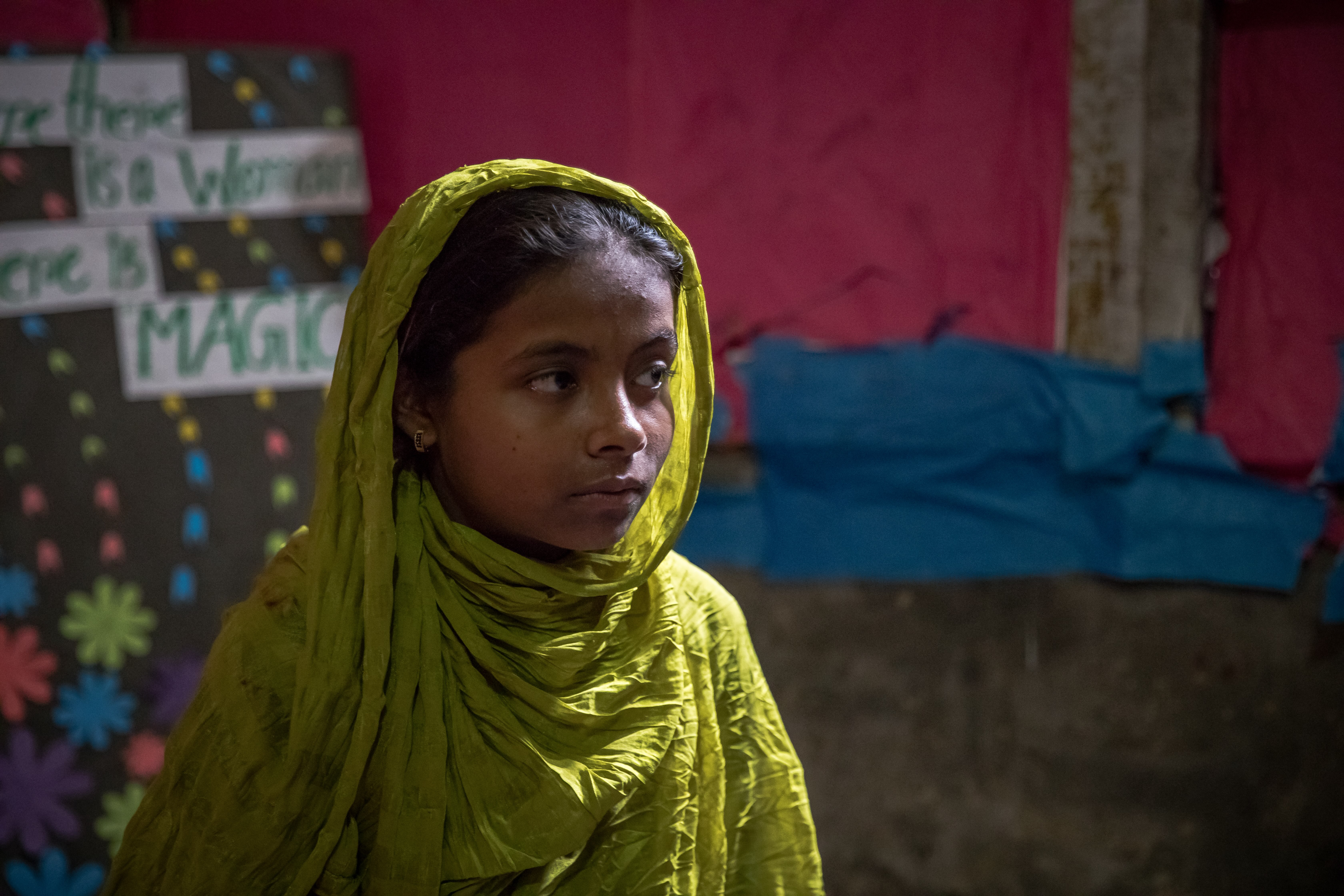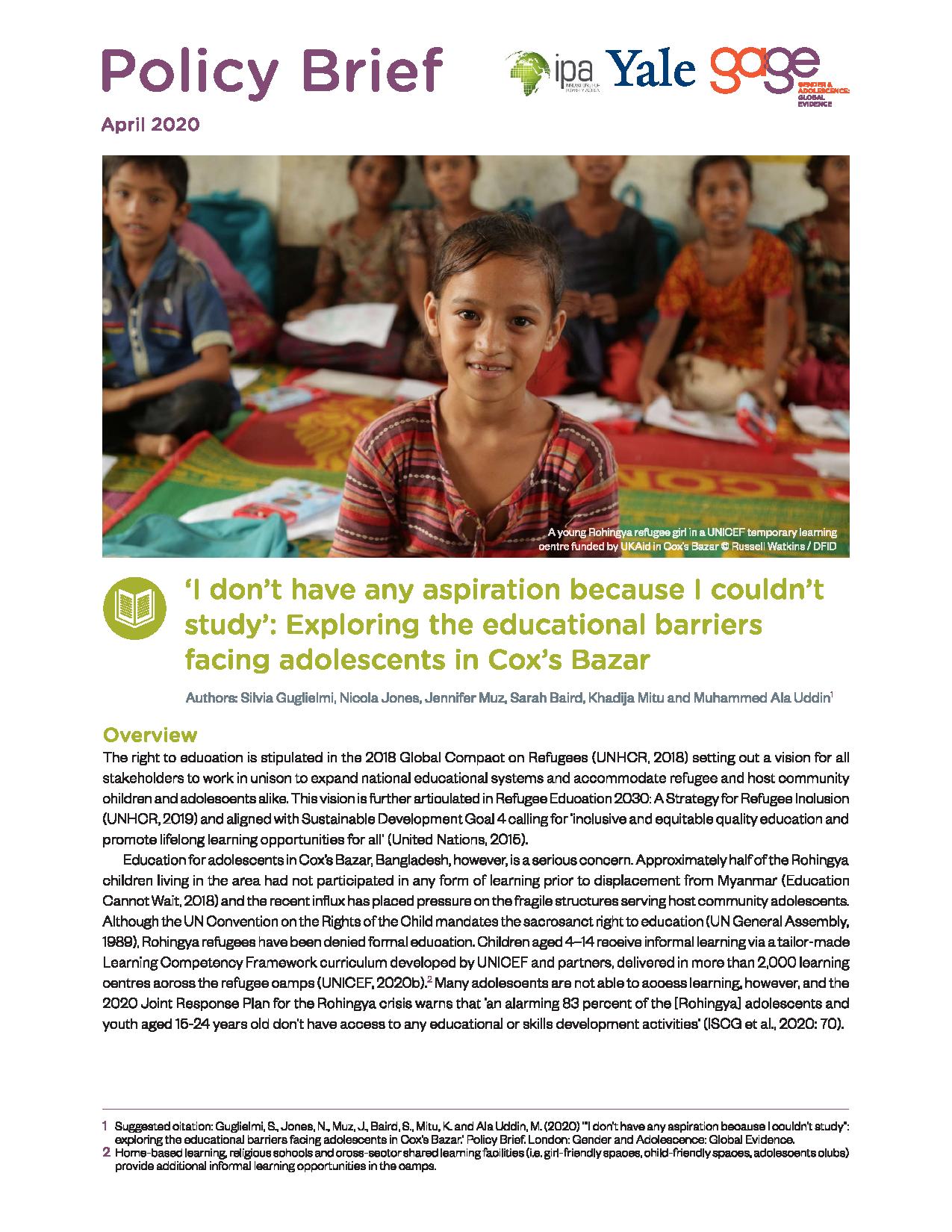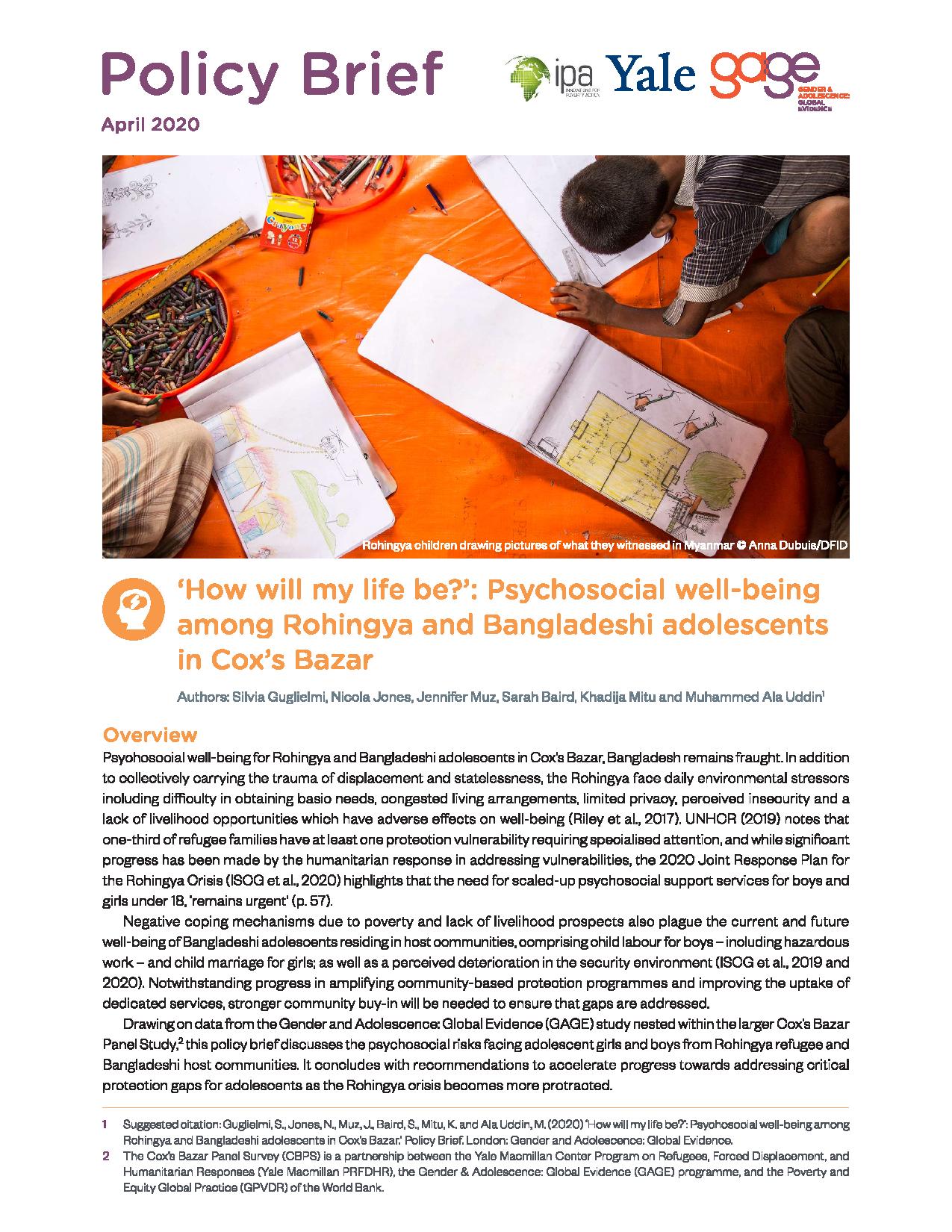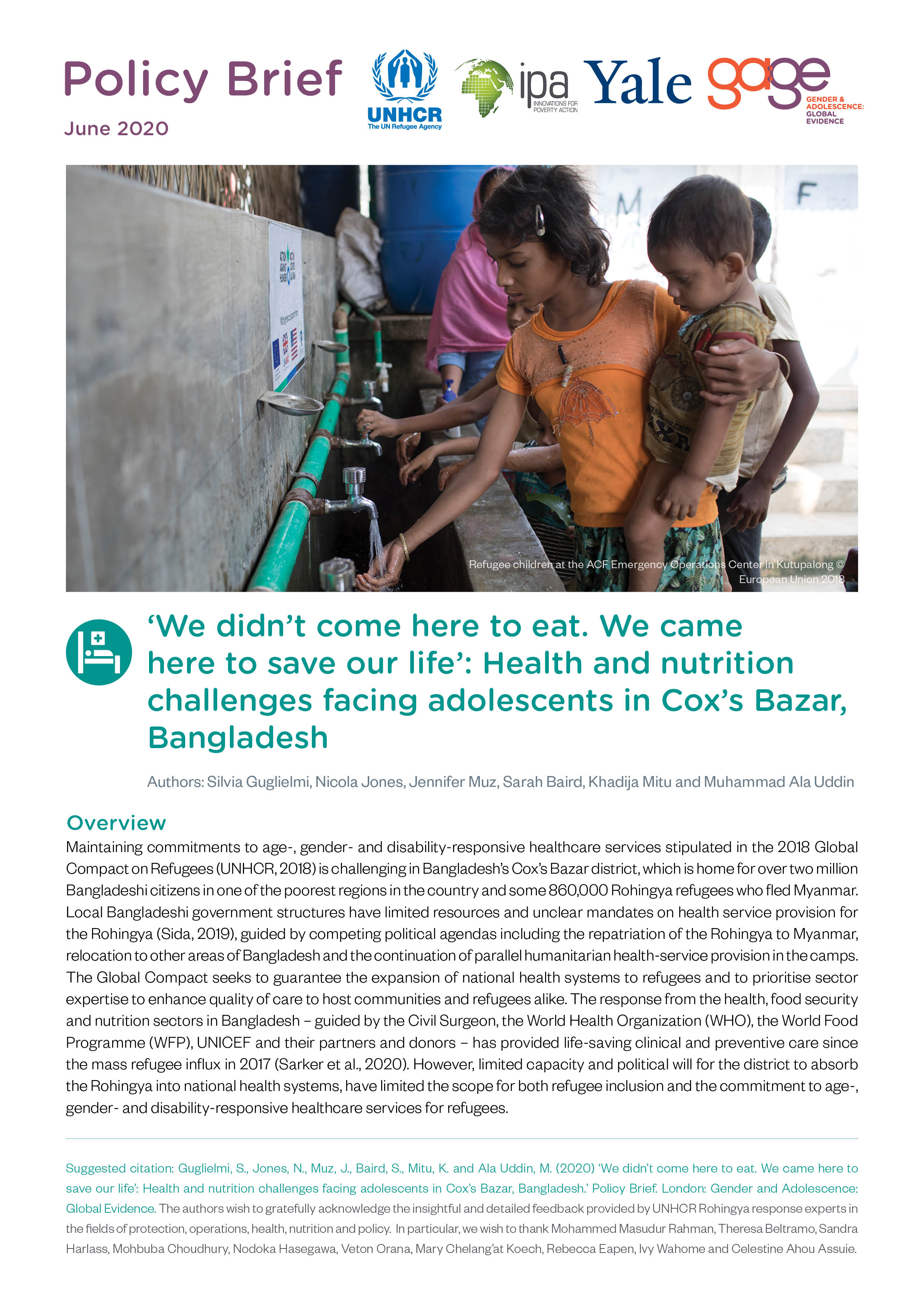
Adolescent vulnerabilities in Cox’s Bazar: A mixed-methods investigation into gendered experiences of sexual and reproductive health and bodily integrity
publication
Adolescent vulnerabilities in Cox’s Bazar: A mixed-methods investigation into gendered experiences of sexual and reproductive health and bodily integrity
15.09.2024 | Bangladesh
Country
Bangladesh
Capability domains
Health, Nutrition and Sexual and Reproductive Health (SRH)
Audience type
Researcher
Year of publication
2024
Study methodology
Mixed-methods
Authors
Silvia Guglielmi, Khadija Mitu, Jennifer Seager
Over 6 years into the mass Rohingya influx into Cox’s Bazar, Bangladesh, the health and protection needs of Rohingya refugees and Bangladeshi host community residents remain acute. Although the response had reached a protracted and more stable nature by 2019, adolescent populations remained deprioritized and faced unmet needs across education, health, economic, and psychosocial domains. With the onset of the COVID-19 pandemic, these preexisting vulnerabilities were exacerbated for adolescents in Cox’s Bazar, and containment measures intensified their marginalization.
Drawing on mixed-methods data collected at baseline (2019) and at two intervals during the COVID-19 pandemic, this research reports on gender-based inequities along the dimensions of sexual and reproductive health and risks to bodily integrity among adolescents in Cox’s Bazar—disaggregating by other intersecting dimensions such as refugee and marital status—to highlight how these characteristics intersect and amplify marginalization. Data find that older adolescent girls (aged 15–19) remain the most vulnerable, while ever-married girls face heightened risks of gender-based violence, particularly in the household. This research sheds light on policy and programming implications in contexts of poverty and forced displacement, including the need to re-prioritize adolescents and to design shock-responsive programming that is able to meet their needs during a crisis.
Suggested citation
Guglielmi, S., Mitu, K. and Seager, J. (2024). ‘Adolescent vulnerabilities in Cox’s Bazar: A mixed-methods investigation into gendered experiences of sexual and reproductive health and bodily integrity’. in: Ravindran, T.S., Sivakami, M., Bhushan, A., Rashid, S.F., Khan, K.S. (eds.) Handbook on Sex, Gender and Health. Singapore: Springer (https://doi.org/10.1007/978-981-19-9265-0_14-1)



